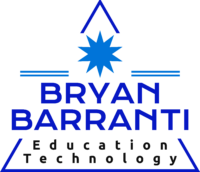Having experienced both face-to-face and online learning environments, I’ve gained insight into the pros and cons of each approach. My online journey began as a middle school woodwork teacher during the COVID-19 shutdown, and now online as a student as I’m pursuing a Master’s in Educational Technology through UVIC. These experiences have given me a unique perspective on what works and what doesn’t in both settings.
During the COVID-19 pandemic when I was teaching woodwork, I had to switch gears quickly from face-to-face direct classroom instruction to remote online teaching. However, like many elective teachers, I was asked to support core teachers to ease the burden on students and families so I didn’t need to develop any online instructions or platforms myself. Therefore, I didn’t get to truly experience online instruction so I missed out on firsthand experience there.
Now, as an online Master’s student, I’m starting to understand what it is like on the other side as a student in the online platform. One major positive element is flexibility. With classes only once a week, I can manage my time better, fitting in my studies around my full-time teaching responsibilities. This is a great advantage for me, especially with so much on my plate with further family responsibilities and crafting side-business projects.

Of course there are challenges too. Moving from the structure of face-to-face classes to the more independent setup of online learning isn’t easy. As someone who learns through discussion and is a bit slow on the reading front, I miss the live interaction and quick feedback from traditional lectures. There’s just something about bouncing ideas back and forth in person that online platforms struggle to replicate.
In addition, waiting for answers online can be a negative aspect to the online learning environment. Unlike the instant responses you get in a physical classroom, online discussions often mean waiting around for email replies or forum responses. It can really slow things down when you are on that writing roll, especially when you’re stuck on something and need a response quickly.
Despite the challenges, both face-to-face and online learning share some key elements that make learning meaningful. Elements like clear communication, well-organized materials, and activities that keep you engaged are important no matter how you’re learning. Further, technology obviously plays an important role in both formats. Whether it’s interactive Smartboards, digital project plans and quizzes in class or Zoom meetings, videos and digital collaboration tools online, technology can really enhance the learning experience.
In conclusion, my journey through both face-to-face and online learning environments has been enlightening, showing me the unique strengths and challenges of each format. While face-to-face instruction offers immediate feedback and dynamic interactions, online learning provides flexibility and access to a wealth of other resources. By embracing the shared elements that create meaningful learning experiences, I can have meaningful learning experiences for all learners.
